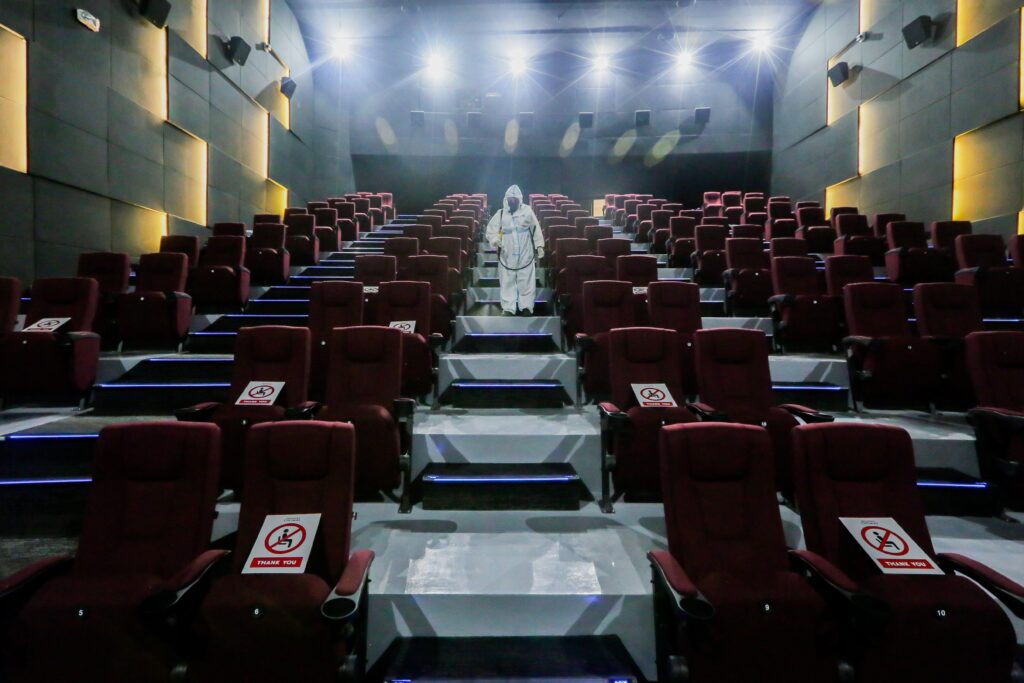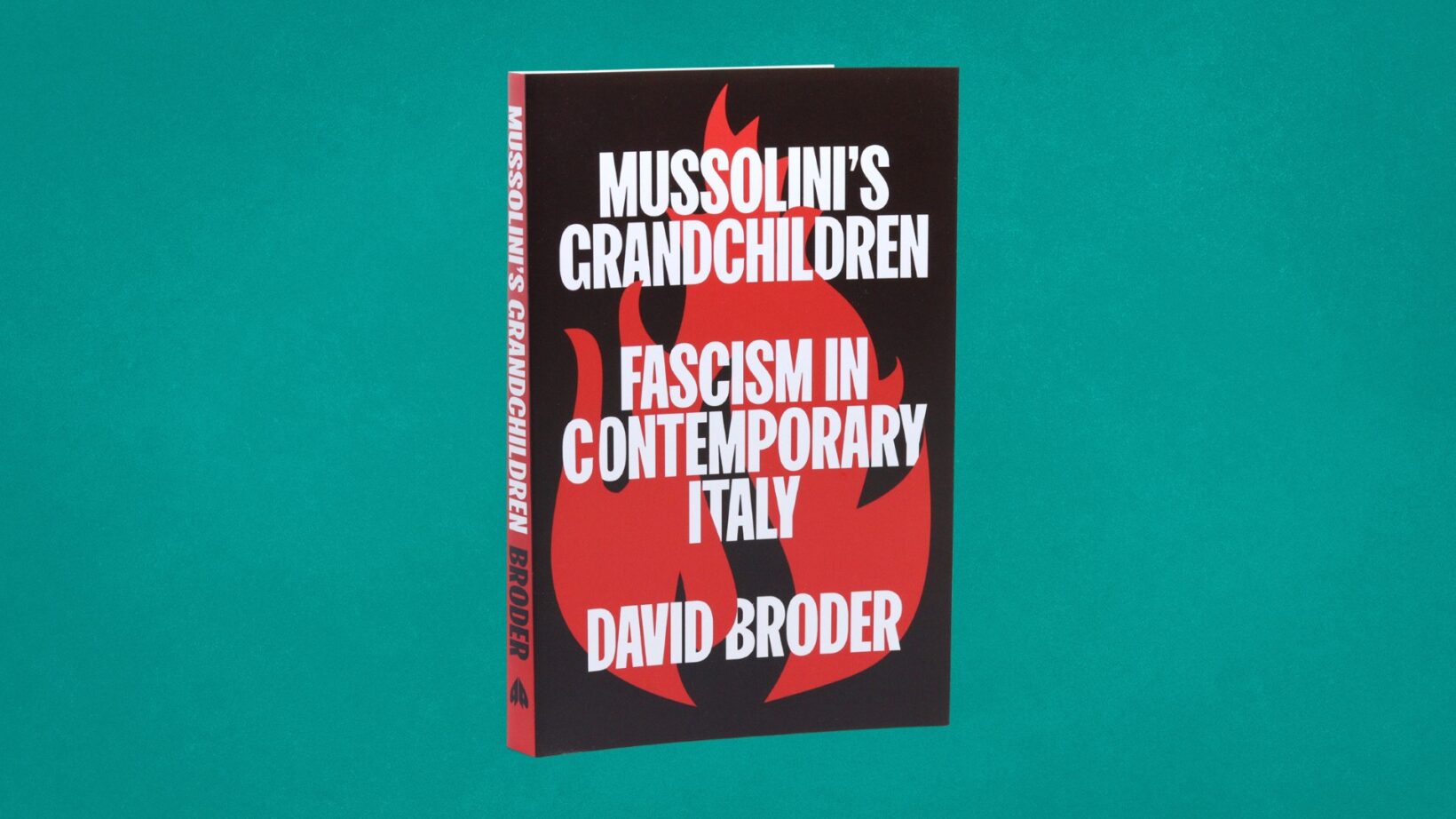Hit by the pandemic and under siege by the forces of the populist right, in Manila a new kind of cinema has been emerging that draws creative energy from the country’s multiple crises.

Ryan Oquiza finds himself in a curious situation.
A Filipino film critic, he cajoled his parents into watching one of the most critically-acclaimed and awarded Filipino films in 2021 – “On the Job: The Missing 8,” the Philippines’ entry to the 2021 Venice International Film Festival. The lead actor of the film, John Arcilla, would later bag the Best Actor plum in the said Filmfest.
The movie, directed by Erik Matti, was a sequel to 2013’s “On the Job,” which revealed an underground hit squad within the prison system. The sequel “On the Job: The Missing 8,” tackles corruption not just in the law enforcement system, however, but is also a blazing commentary on perfidy within the journalism profession itself and the evil of authoritarian regimes.
The film was distributed by HBO Asia, giving viewers both in the Philippines and abroad, access to it.
Oquiza’s parents chose not to finish the film, however.
“There’s a particular scene where there’s a montage of Marcoses, a very explicit picture and video footage of Ferdinand and a young Bongbong Marcos. My parents immediately turned it off,” Oquiza told the New Voice in an online interview on Dec.30.
This is because Oquiza’s parents are both supporters of the Marcoses, a political clan that has shaped the country like no other during the dictatorial presidency of Ferdinand Marcos from 1965 to 1986. His 20-year rule was beset by recorded cases of human rights violations, cronyism and widespread corruption.
Over 30 years after his regime, however, his son, Ferdinand “Bongbong” Marcos Jr. aims to place their family once again at the pinnacle of power by gunning for the highest seat in the land. His campaign strategically harps on the message that the Philippines’ golden years happened under his father’s rule, a message which resonates with people who have grown disillusioned with democracy.
“They were ranting to me – they were telling their thoughts to me – that’s so political. They were asking – who produced this, is it ABS-CBN, do they have a political agenda?”, Oquiza says. ABS-CBN refers to the biggest broadcast network in the country, which has been shut down twice – first, during the Marcos regime and second, in 2020, under the rule of President Rodrigo Duterte.
It is not only “On the Job: The Missing 8,” which was shunned by some Marcos supporters like Oquiza’s parents, however.
The horror-comedy flick “Exorsis,” an official entry to the Metro Manila Filmfest, found itself, on one hand, at the receiving end of calls to boycott it from those who are against the Marcoses and are supporters of the opposition’s presidential candidate, Ma. Leonor “Leni” Robredo.
The movie stars Toni Gonzaga and her sister Alex, both of whom are associated with the Marcoses. Toni had Marcos Jr. as a sponsor and godfather at her wedding in 2015.
“After some days, there’s no more buzz to the movie “Exorcis” which flopped. This is a lesson to producers to not get actors who are not accepted by pro-democracy forces,” veteran journalist Philip Lustre Jr. tweeted on Jan. 3.
This polarization was the ingredient that revealed the crisis being faced now by the Philippine cinema, as not only being the byproduct of a decimating pandemic, but of a deepening political crisis which the country has been experiencing since the takeover of power by populist strongman Rodrigo Duterte in 2016.
It is important to understand, however, that the Philippine cinema is grappling with a crisis that at this point has various dimensions: it is commercially existential, but there are hopes that this quandary could lead to more innovative policies, storytelling and exhibition models, the kind of evolution or paradigm shift that usually comes on the back of crisis cinema.
In the book “City on Fire: Hong Kong Cinema,” which was authored by Lisa Odham Stokes and Michael Hoover and was also quoted by film scholar Gina Marchetti in her book “Andrew Lau and Allan Mak’s Infernal Affairs: The Trilogy,” crisis cinema is defined as cinema emerging from a tipping point of having “new patterns of language, time and space, place and identity, and meaning itself.”
Acclaimed German director Ernst Wilhelm “Wim” Wenders, on the other hand, recently gave a succinct explanation of one of the critical components of an existential crisis – the absence of moviegoers in theatres.
In an article for Variety, he lamented how the pandemic has further fueled the transition to streaming services, leaving the cinemas as nothing but an abandoned home for a very specific art – the films.
Globally, audiences have moved to consume films via Netflix, HBO, or Disney+ as the pandemic hit in 2019. The reasons for this were straightforward – the shutdown of movie theatres was part of the measures implemented by governments throughout the world to reduce the transmission of the novel coronavirus. People consequently turned to streaming services for entertainment, especially when countries were placed on lockdown.
This helped buoy the number of subscribers for Netlflix, which by January 2021, has hit 200 million. Prior to that, Disney launched its own streaming platform in 2019. It has
118. 1 million subscribers as of October 2021, according to The Variety.
Moviegoers in the Philippines also turned to these Western streaming services, but the existential crisis, in this case, takes on another facet – and it’s the surge in the prices of movie tickets.
It was a lethal combination. The economy has taken a vertiginous plunge but access to cinemas has also started to become more of an option for the bourgeoise because of the pricey tickets.
To be able to watch a film, one has to shell out P350, or about $7. The average salary of a Filipino is P15,200 or around $295 and is considered one of the lowest in the world in 2020. It would make sense, especially for those most affected by the economic impacts of the pandemic, to allot this money instead to more basic necessities like food and even medicine.
“The Philippine moviegoing public cannot afford P350,” renowned director Joey Reyes told The New Voice in an interview on Jan.6.
Another director, Rod Singh, concurred that the steep price of the tickets has discouraged moviegoers from watching films.
“Regulate the prices of the cinema. Make it [ticket price] P150 ($3),” she said, adding that the producers have pushed for this pre-pandemic.
Given how much the industry has lost during the pandemic, however, the reduction of ticket prices may not happen anytime soon. It is, after all, both a consequence and a symptom of the lingering problems of the current profit-sharing arrangement in the cinema industry, where producers and movie house operators do not only have to split revenues, but also see part of their sales go to amusement taxes.
This is on the back of additional production costs for safety measures introduced during the pandemic. Reyes and Singh said that another P1 million-P2 million ($19,484 – $38,968) has to be shelled out for the COVID-19 tests of the production crew and the stars and the creation of lock-in bubbles.
The existential crisis crippling the local film industry, however, is a corollary to other forms of challenges which often shape the birth of crisis cinema. In the case of Hong Kong, this crisis cinema was evinced in 2002’s “Infernal Affairs.”
In her 2007-book “Andrew Lau and Allan Mak’s Infernal Affairs: The Trilogy”, the film researcher Prof. Gina Marchetti from the University of Hong Kong, explains the social, economic and political contexts which the movie reflected and responded to.
“Emerging at a time when Hong Kong was shaken by SARS, a depressed economy, and waves of political disaffection culminating in the July 1, 2003 demonstrations, the Infernal Affairs trilogy speaks to the times,” she wrote.
She added that this was also an era changed by the influx of Hollywood films, the rise of digital technologies, the role of triads in the film industry and the brain drain. Furthermore, the film scholar said these local realities are also indicative of the larger global issues concerning political authority and identity, among others.
An important takeaway from this, however, is that this crisis, Marchetti posited, “also gives rise to opportunity.”
In the case of Philippine cinema, this means, according to Reyes, the opportunity to “accept, adapt, advance.”
“Accept that the old business model does not work,” he said and adapt to it.
Streaming, realistically speaking, is now the way forward, one that the Philippine industry has been cognizant of since 2010 with the launch of iWant, also operated by ABS-CBN. The difference now is there are additional players such as Vivamax, Upstream PH and KTX, though KTX is also managed by ABS-CBN Films Production Inc.
There are disadvantages to it as it will not bring in the same level of profits to the producers, but there are also advantages that are worth noting.
“It somehow advances the development of these virtual platforms as an exhibition space,” Hyro Aguinaldo, a screenwriter said in an interview on Jan.5.
Adding to that, content for streaming platforms may enjoy more freedom, if you will, in exploring themes that would otherwise be negated or nixed in conventional cinema.
“This is the new advent of pito-pito filmmaking (or completing films in seven days) where so many films are erotic and sexual and they are being released monthly,” Oquiza said.
If risqué was able to find a renaissance in Philippine streaming services, the next opportunity that
crisis cinema presents is the exploration and experimentation of content that could resonate again with Filipino filmgoers.
This content, just like in “Infernal Affairs,” could be political. If this will be the case, for film critic John Patrick Manio, documentary films like Alyx Arumpac’s “Aswang,” which tackled the problem of extrajudicial killings under the Duterte regime, could be “more potent to be more engaging, scrutinizing than fiction.”
“Alyx Arumpac’s Aswang is a better point for comparison for crisis cinema. I think fiction films here aren’t really that potent politically compared to documentaries – as in direct politics,” he said in an interview on Jan. 5.
Politics and the state of the nation have always been tackled in Filipino films, but at this juncture, it has become the story that must and should be told.
“The veil of entertainment as being an opium for the masses [has] disappeared. The people were forced to see the big picture,” Aguinaldo explained. “The affairs of the nation is so dire, that the thought that they could escape through their TV or movies, is already a lie.”
At the other end of the spectrum, however, is the notion that the story that could re-energize the local film industry could be that of fantasy – not the genre as it’s given life to by Marvel films, according to Singh, but the kind of fantasy which mirrors the aspirations of the Filipinos. These aspirations may be impossible to achieve, but one wants what he or she could never have — and the same goes for the Filipino moviegoer.
“Even if you initially perceive it as a fairytale or as a fantasy, it will pay off, once you get to spread that message of hope,” she said.
Meanwhile, if this division has contributed to the crisis, then it could also catalyze the making of a film that would “unite” Filipinos, Liza Diño-Seguerra, chair of the Film Development Council of the Philippines said. This means highlighting other aspects of what being a Filipino could mean outside the realm of sociopolitical cataclysms.
“I want to challenge our filmmakers, to not just – I’m not saying to stop doing those narratives, because these narratives are important discourse, but, I think it’s also our responsibility to show the [country’s] other sides. We are a multifaceted country. What makes us Filipinos?” she told The New Voice on Jan. 7.
If there is a diversity of perspectives on what could be the story that could connect with the Filipinos at a time of crisis cinema, there is a resounding call, however that censorship should not come at play, a fear that goes with the kind of leadership that will be elected in May 2022, when the voters – also the moviegoers – choose the next president.
“Whoever will be the next president will have an impact on Philippine cinema,” Jerry Grácio, an award-winning screenwriter said in an interview on Jan. 7. “The crisis in the cinema will only end if we address the problem of the Philippine society.”
Purple Romero is a Filipina journalist based in Hong Kong. Her articles about subculture, gender politics and climate change have been published on vice.com, South China Morning Post, Al Jazeera online, among others. She also does movie reviews and writes about the film industry as a whole for Asian Movie Pulse.







